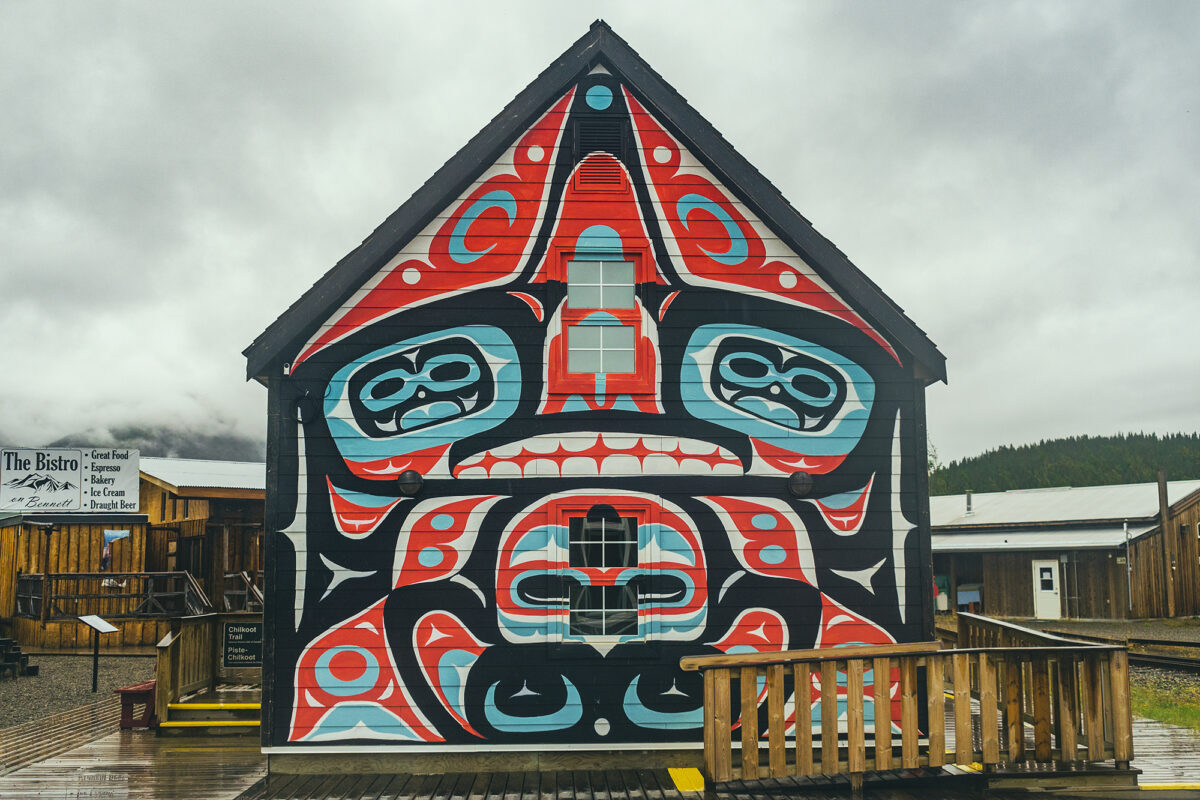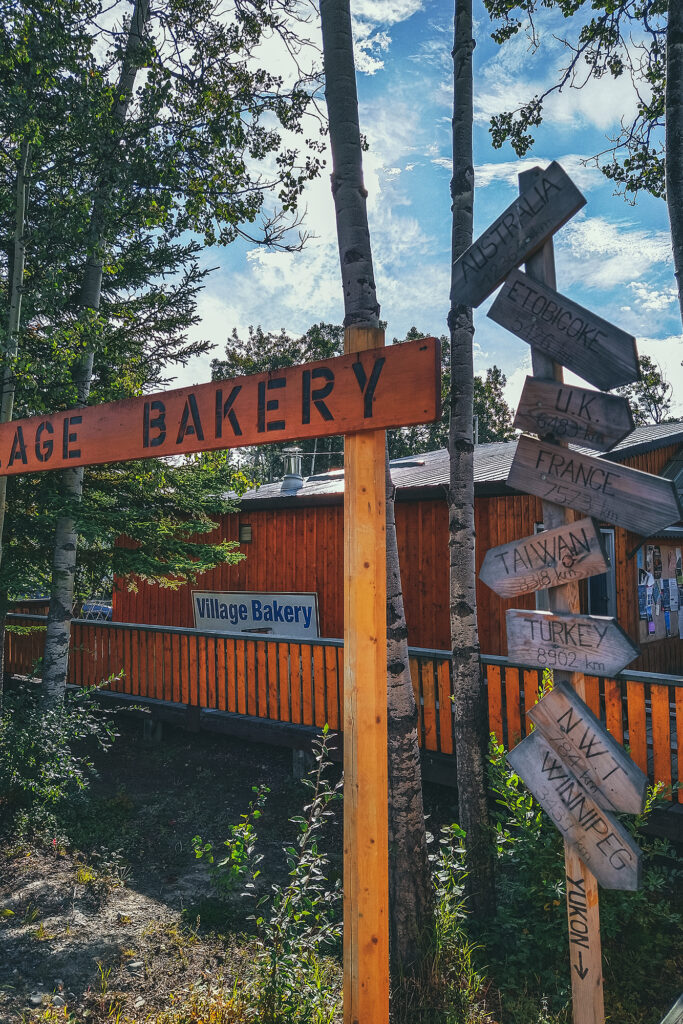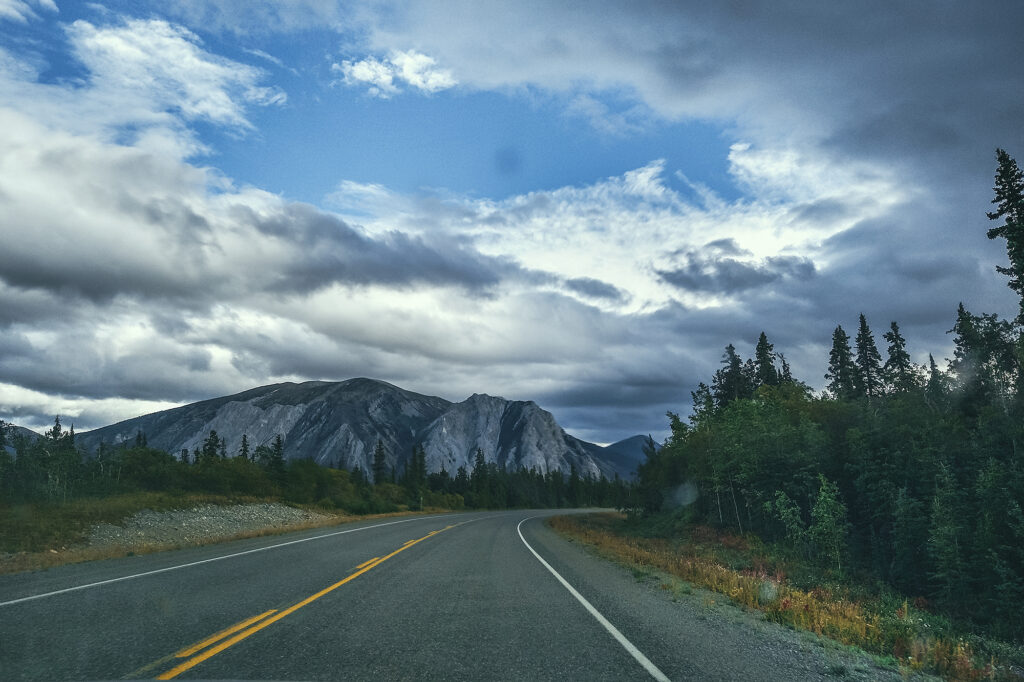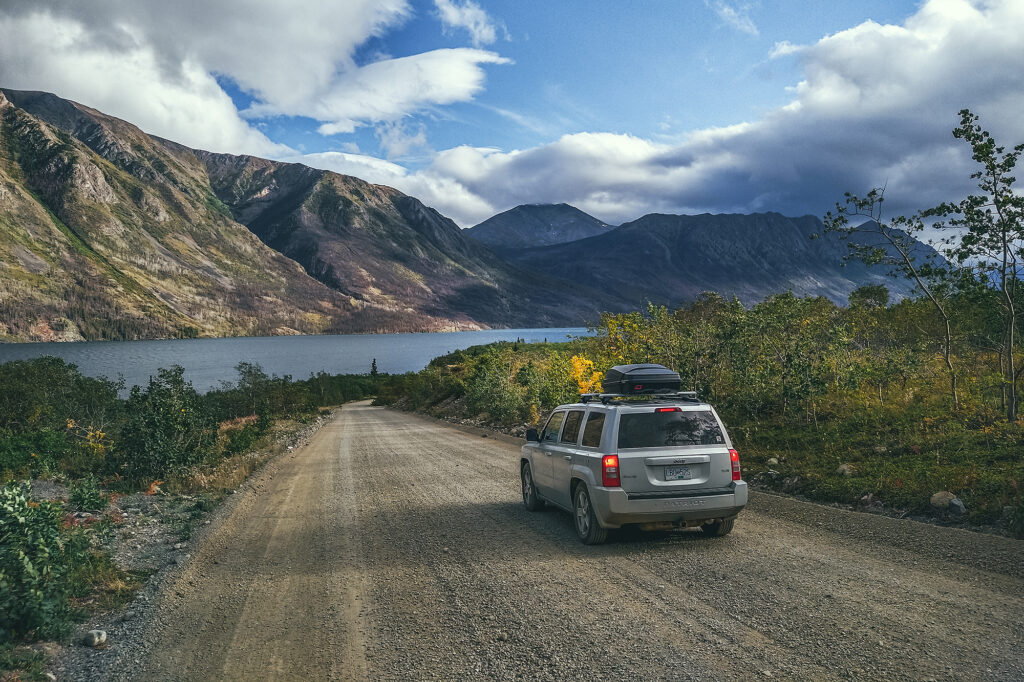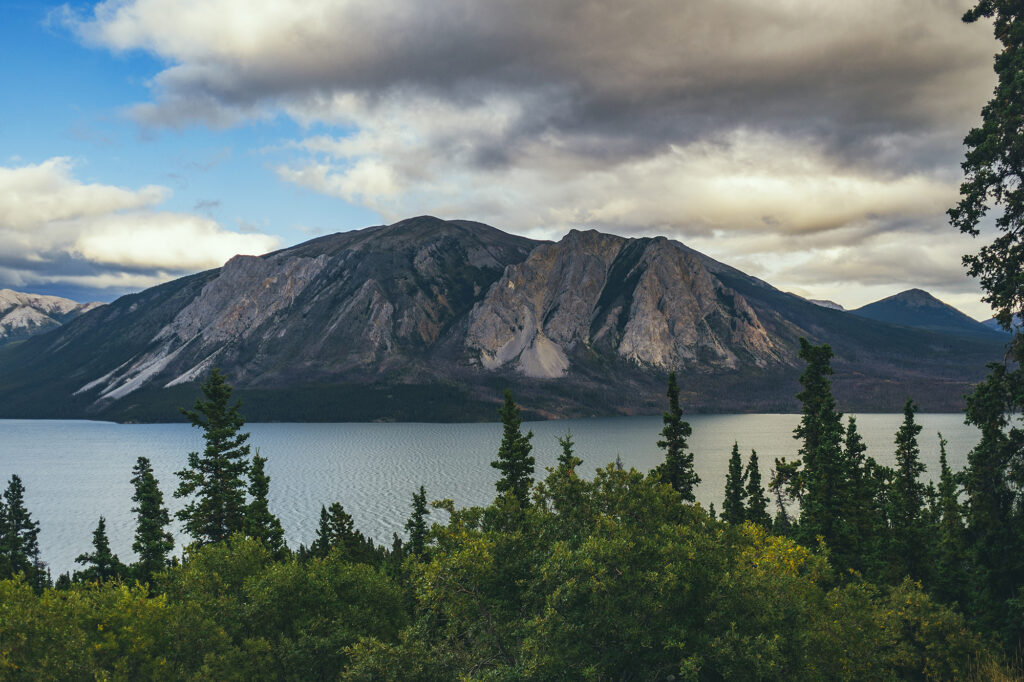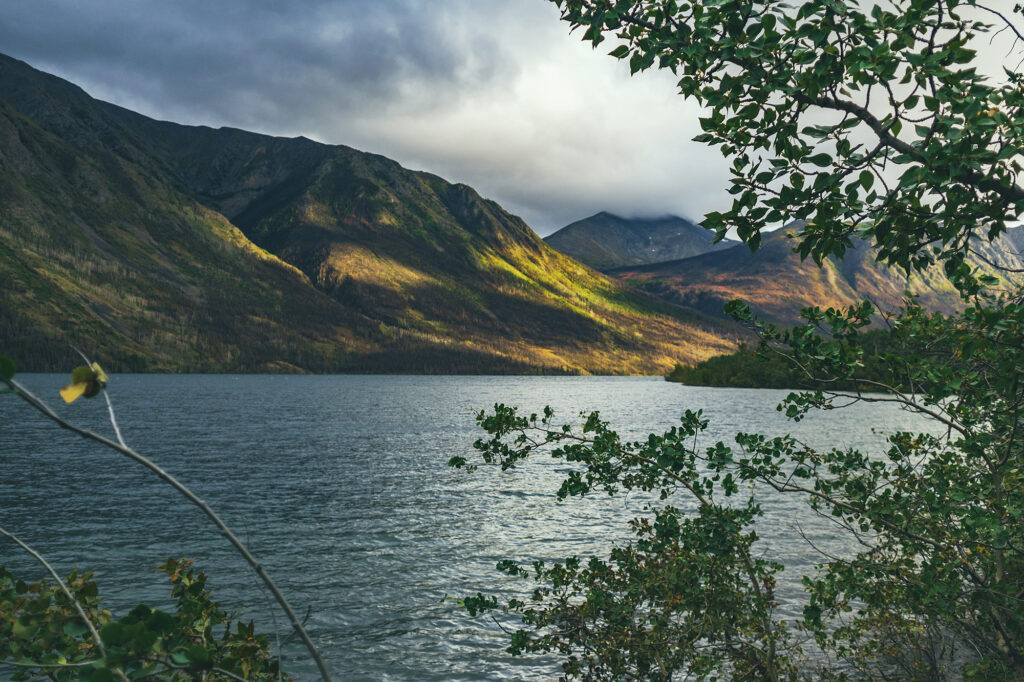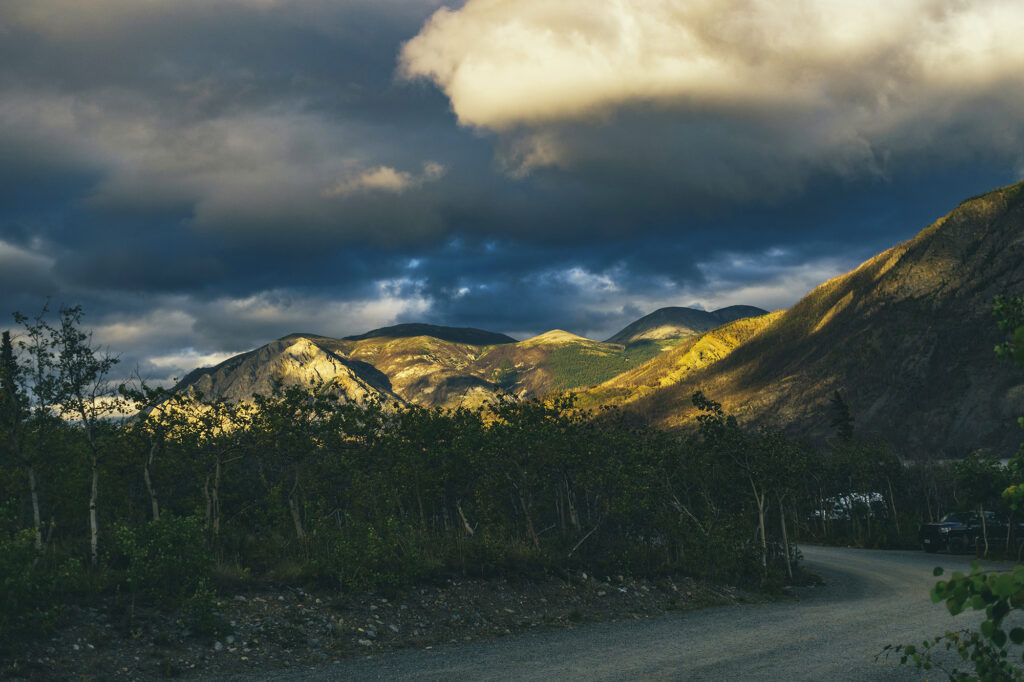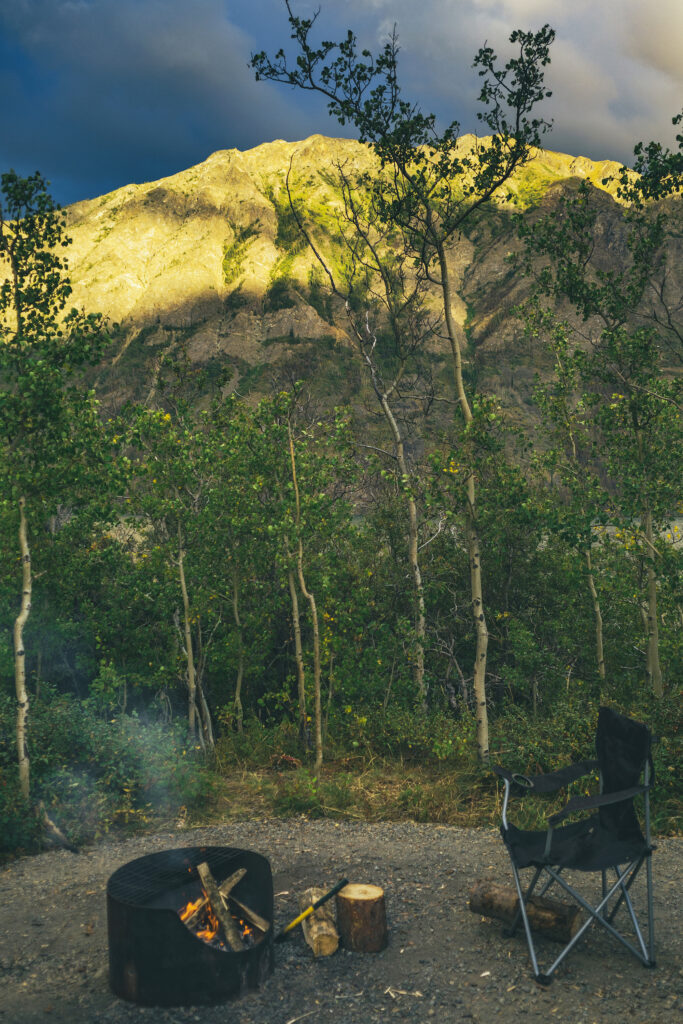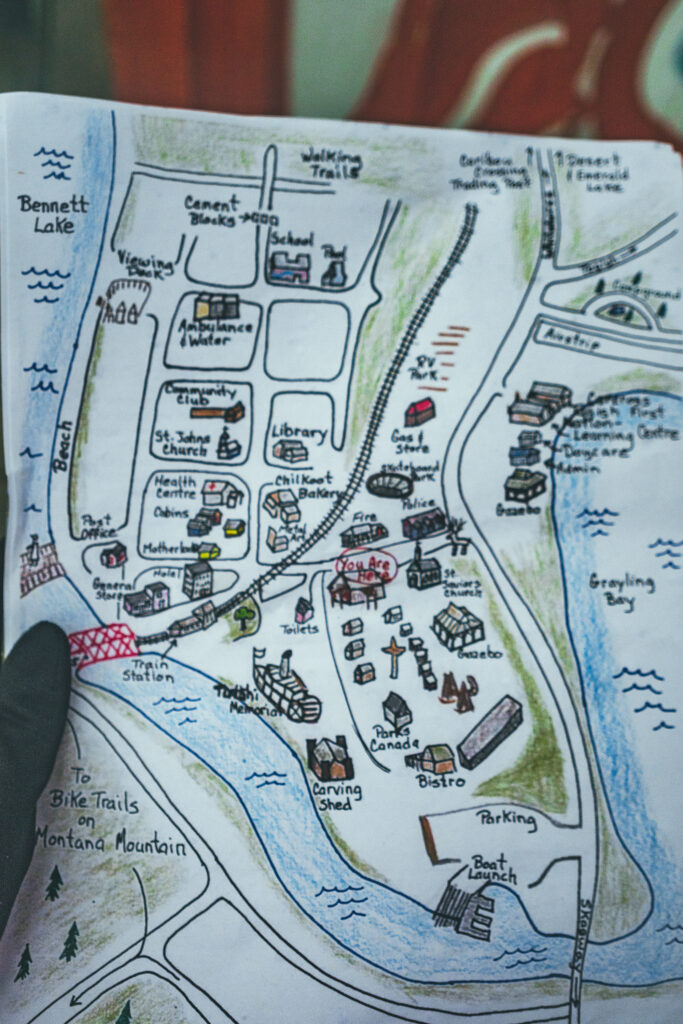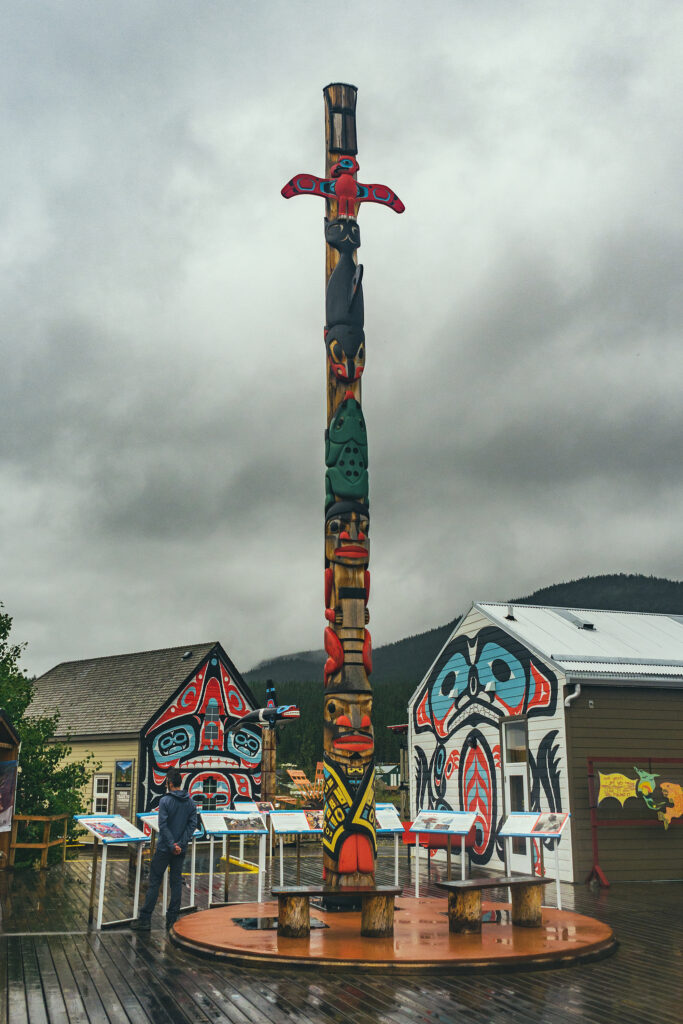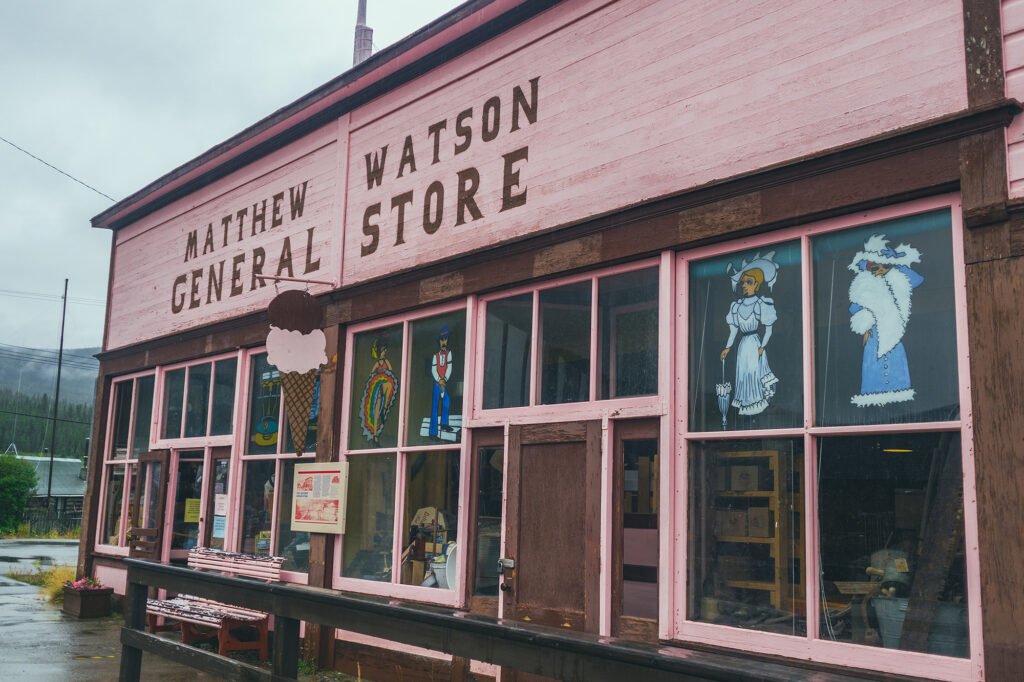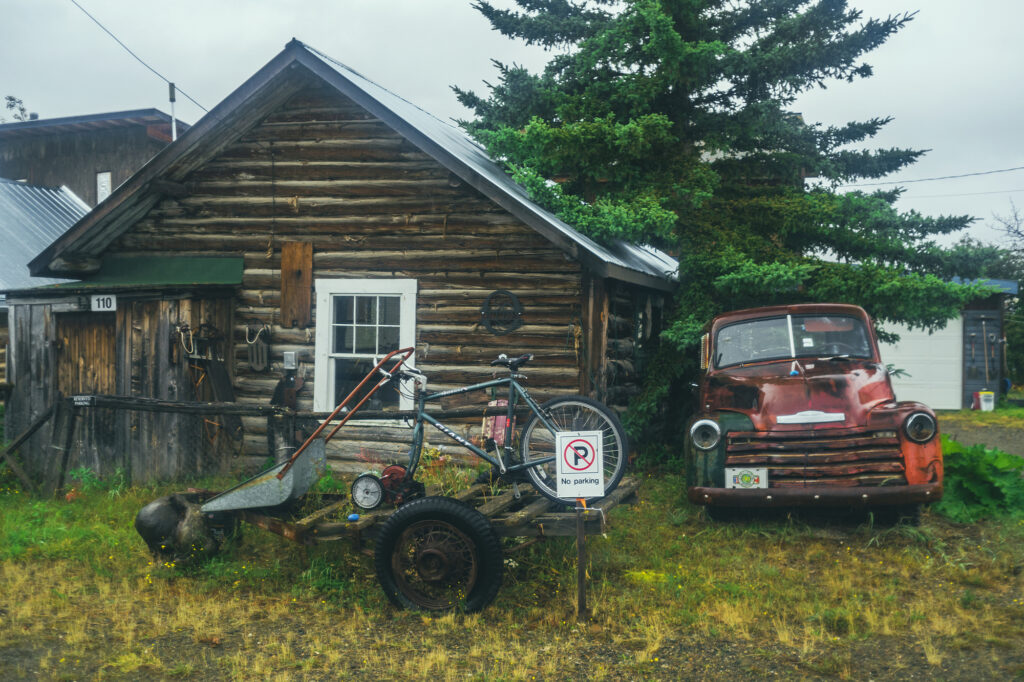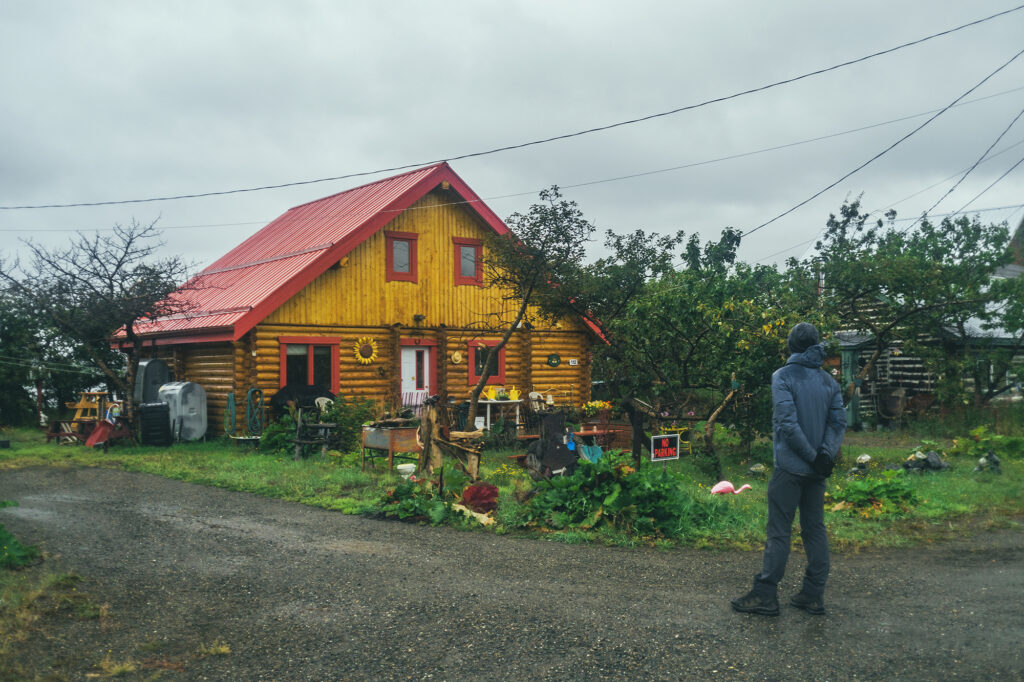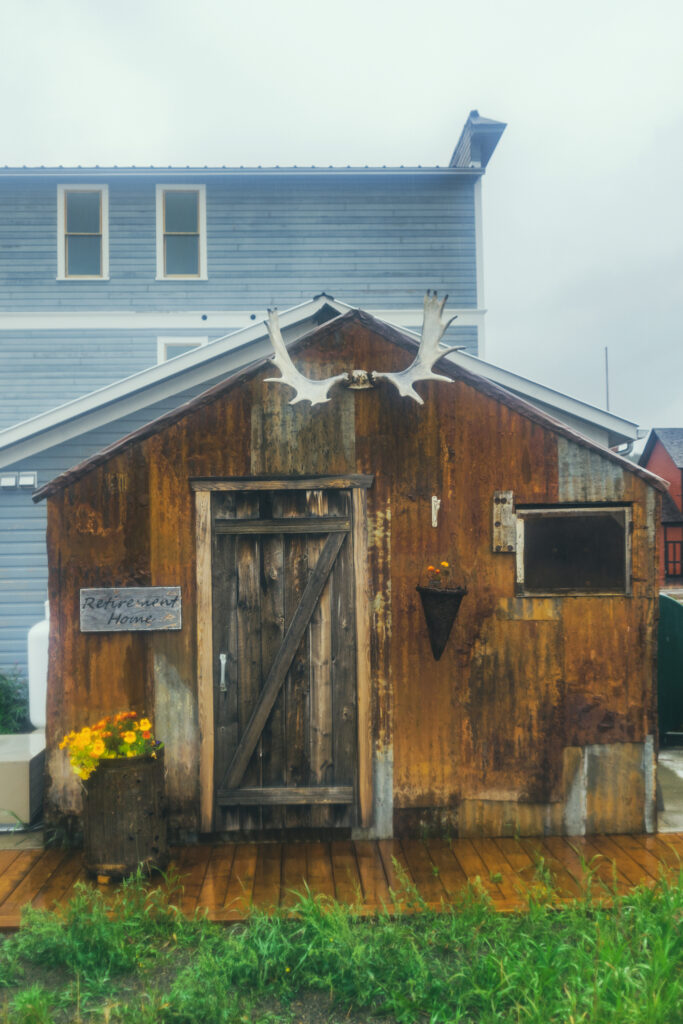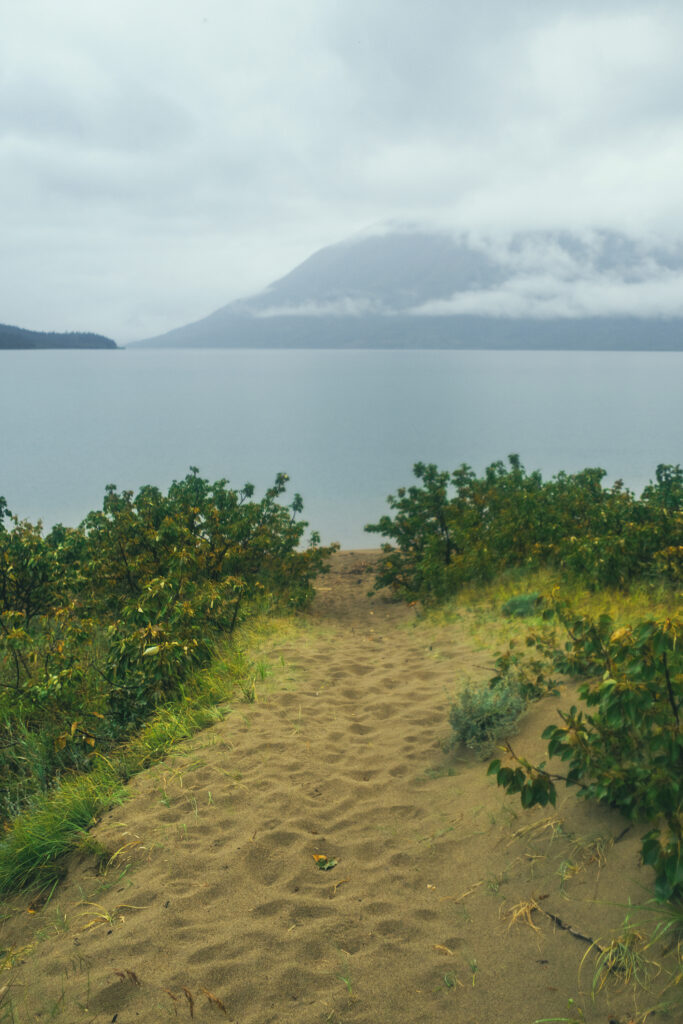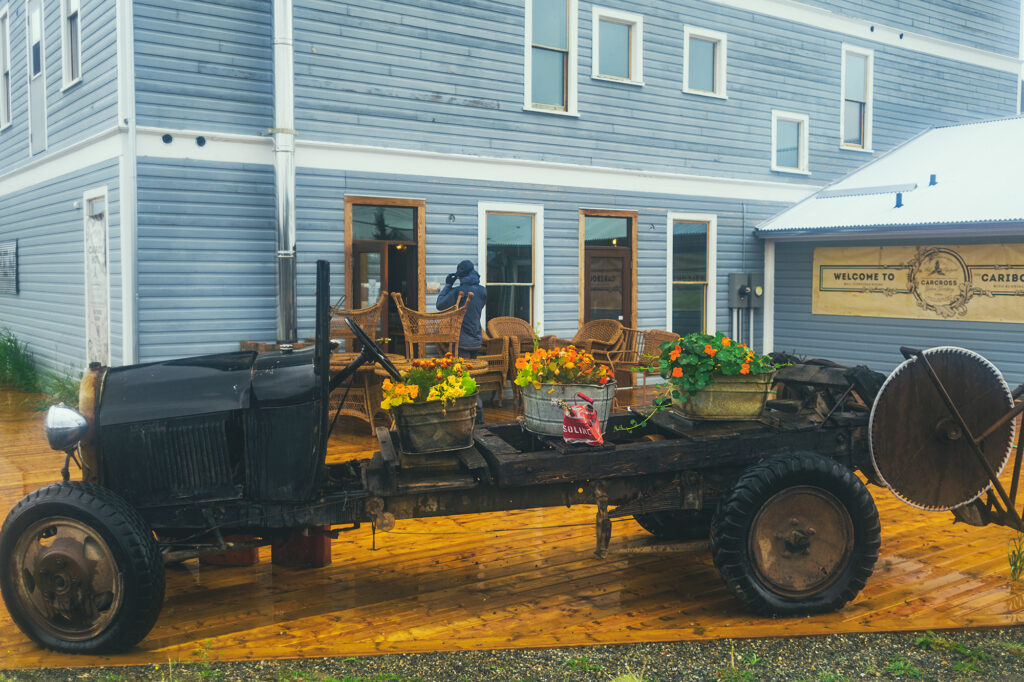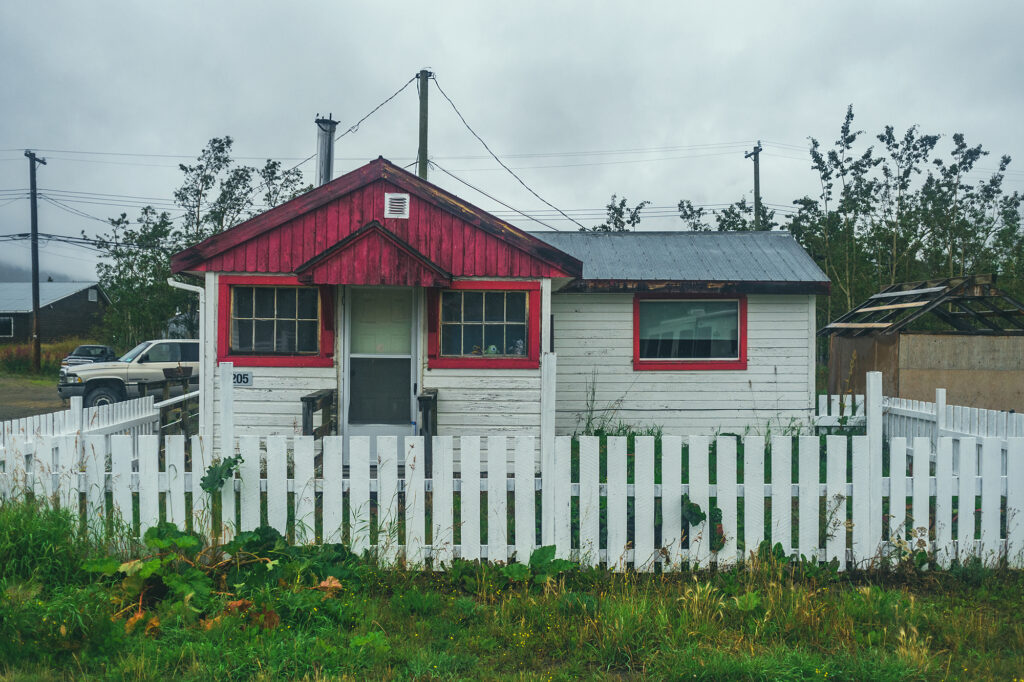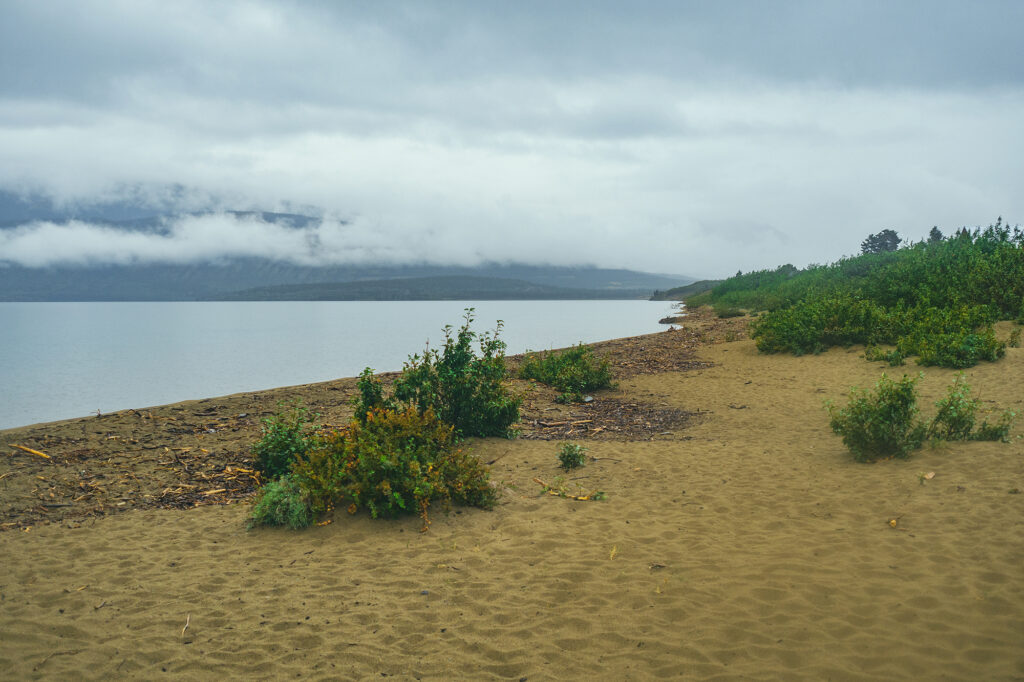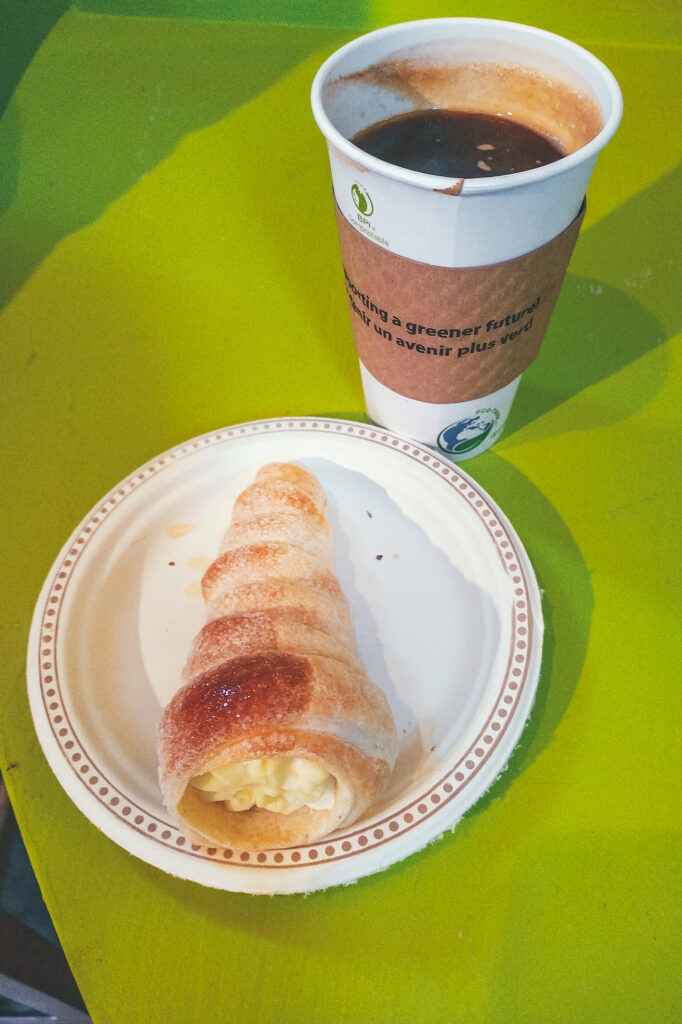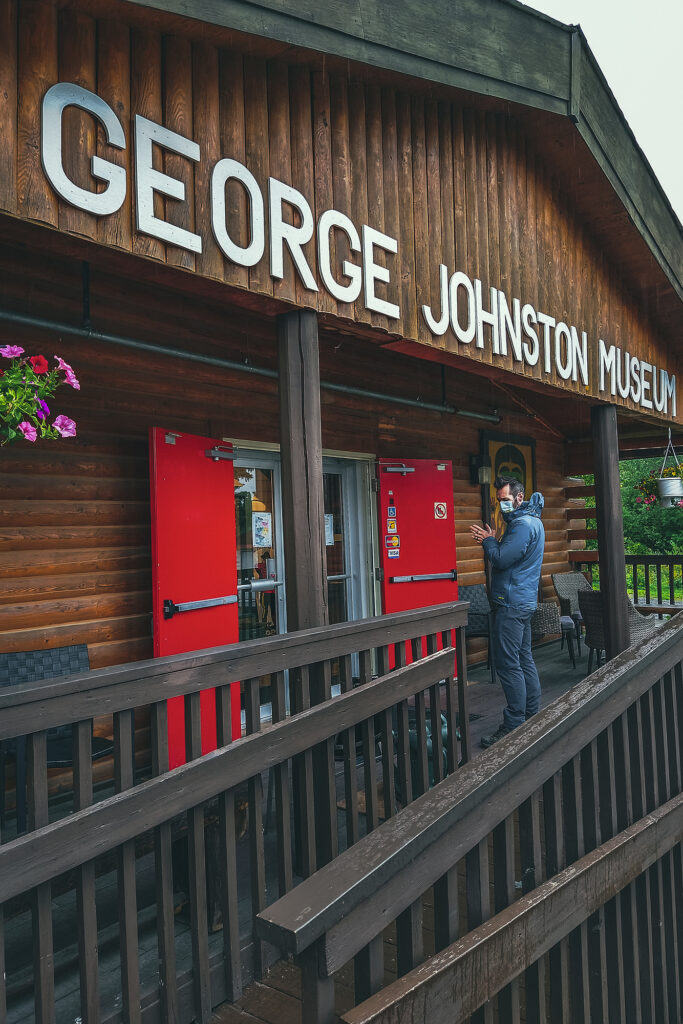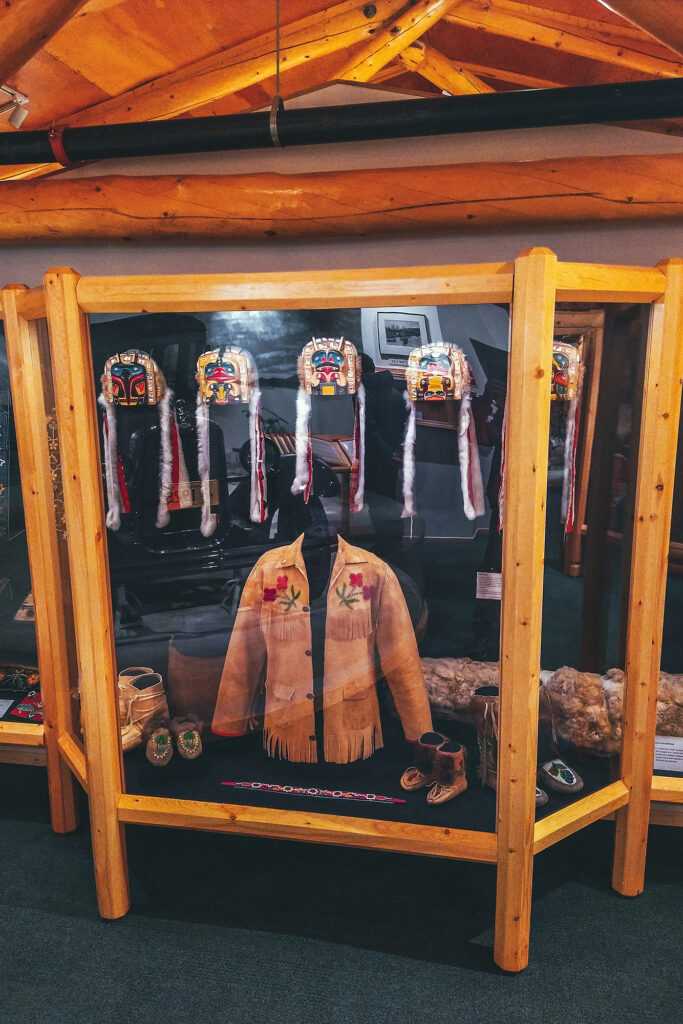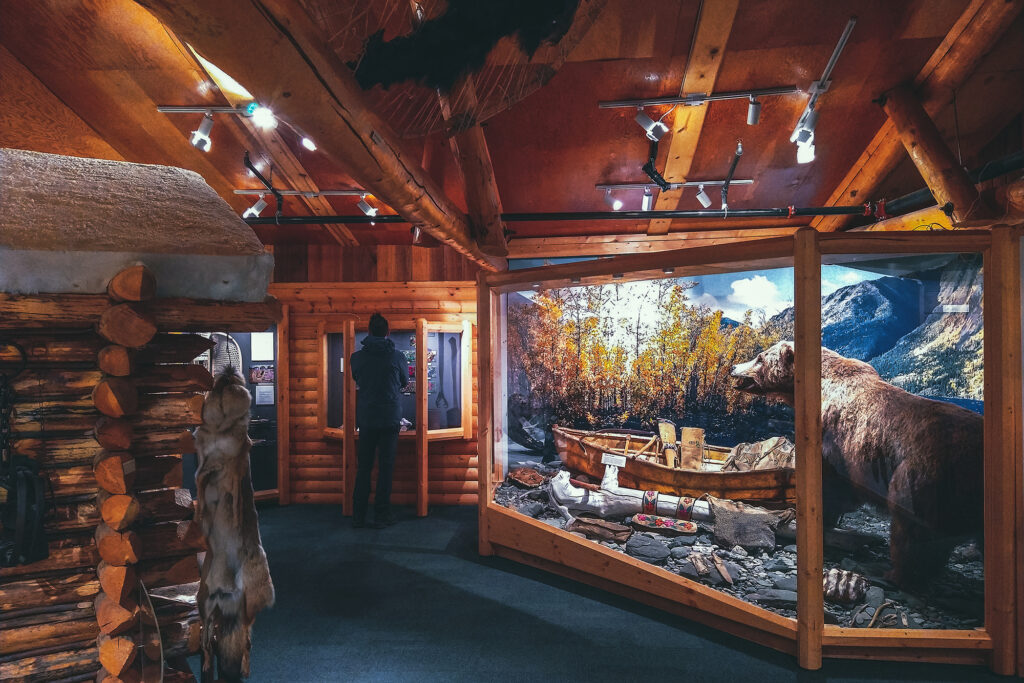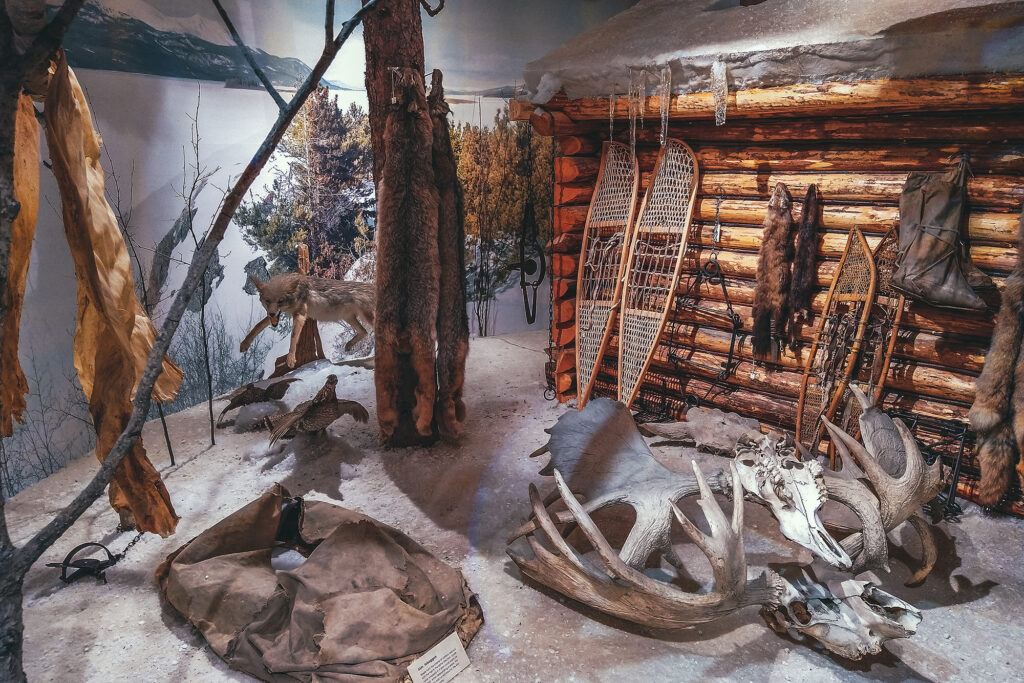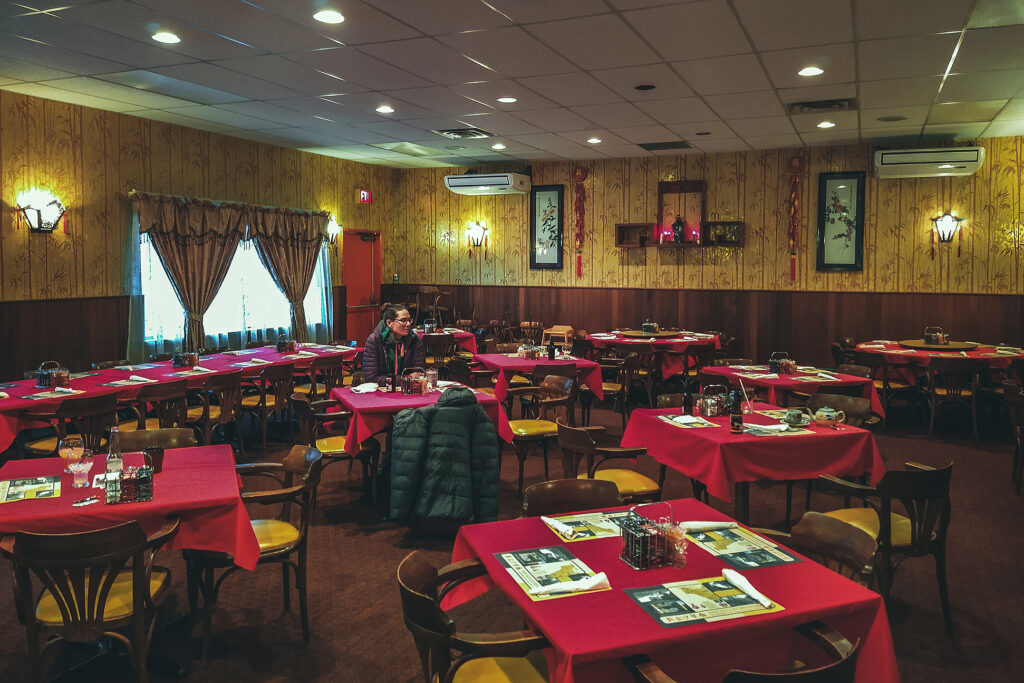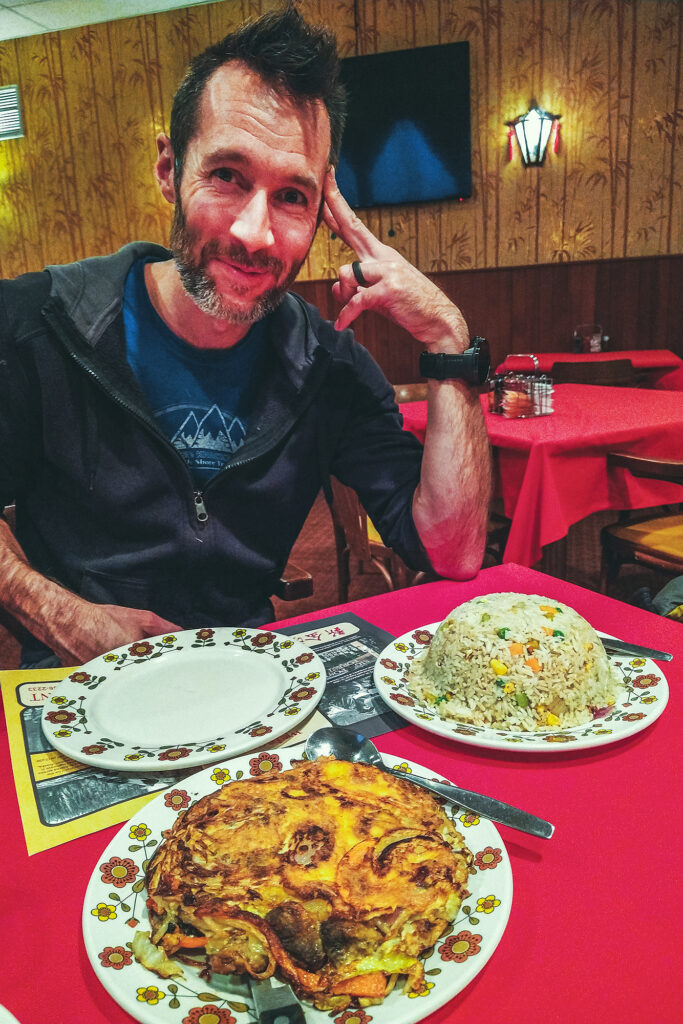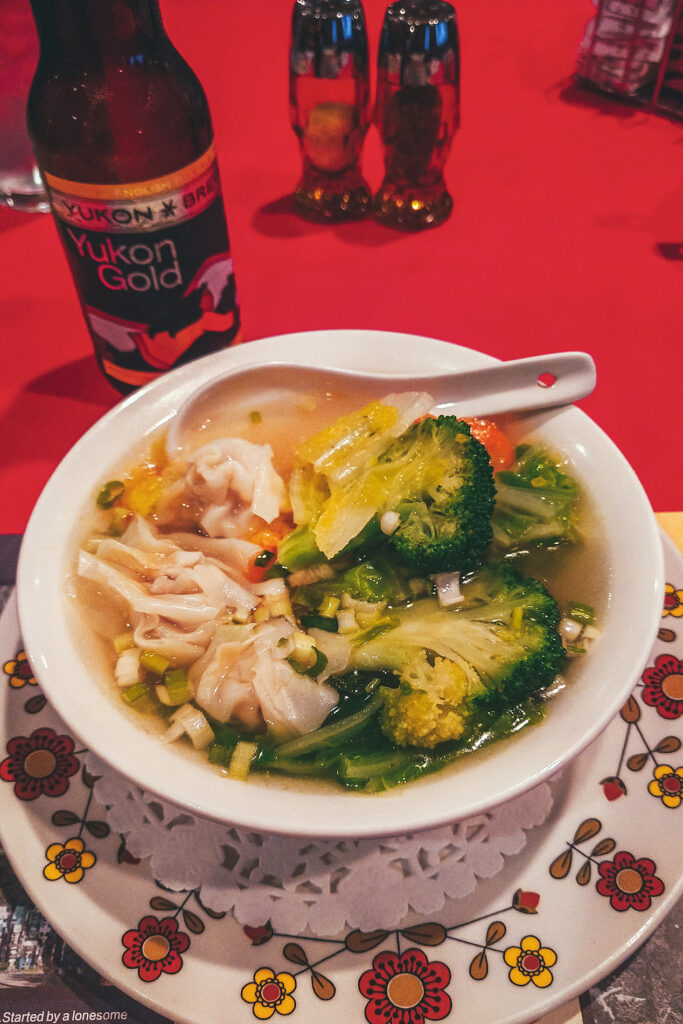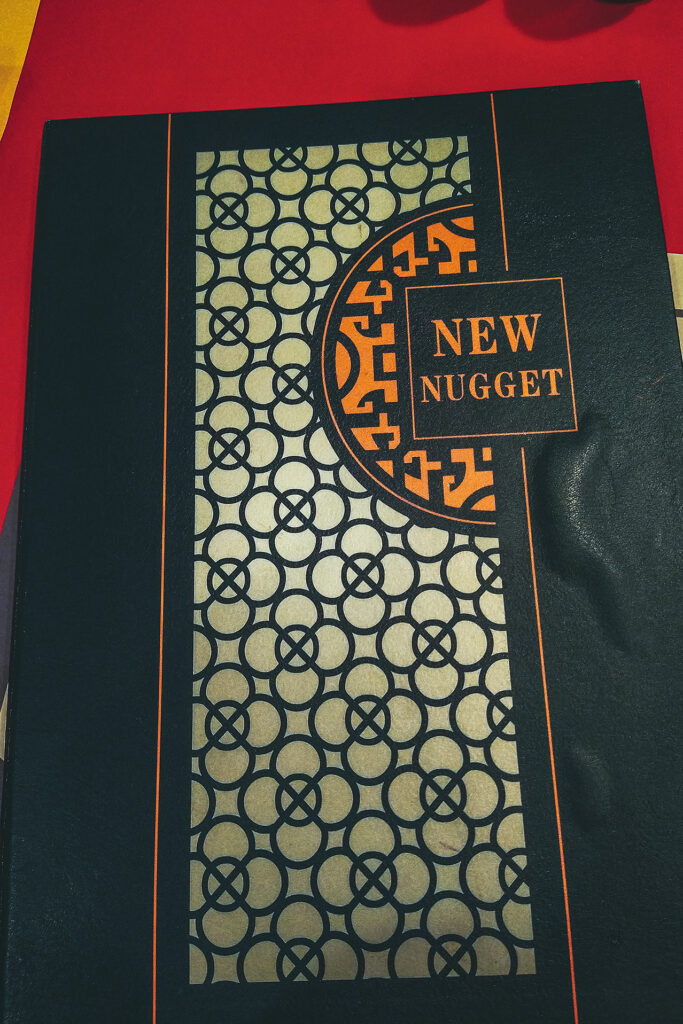August 27 – Drive to Conrad lake
It was pretty cloudy when we got up. We had entertained the idea of trying to paddle on Kathleen lake, but seeing how overcast and windy it was, we decided against it.
We drove back to Whitehorse and grabbed lunch at the Alpine Bakery – which we found out later claims to be German, despite all the French people working there and frequenting it?
We hadn’t really spent anytime in Whitehorse the previous couple of times we drove through, so we decided to give it a go. The downtown area wasn’t all that appealing – not a whole lot of stores, or maybe we didn’t spend enough time ?
There was one massive outdoor outfitter store, and then we found a block that had a gallery with a few things – “artisan” souvenirs, a bakery, a couple of home decoration shops, a yarn store.
We walked a few blocks along the small downtown strip, then North along the river. We visited the Cultural center for some insight on the local Kwanlin Dün First Nation.
We left Whitehorse mid-afternoon and drove south towards Carcross. Someone had recommended Tutchi Lake as a place to spend the night. We first drove into Conrad Lake Gvt Campground and seeing how busy it was (it was after 5pm on a friday night), I worried we would drive to Tutchi, 20 min away, to find no available spot (our campground apps indicated only 5 spots there) then drive back to Conrad and find a full campground.
So we set up camp in a spot that was actually quite nice, with view of the lake and a short trail leading to the shore. The light was really nice, hitting the mountains across the lake. It was quite windy when we first arrived but the wind died down in the evening so we had a rather pleasant camping experience that night.
August 28 – Visiting Carcross and Teslin
It rained pretty heavily at night and didn’t stop in the morning. I didn’t feel like rushing so I indulged in some morning reading before getting up. We kept breakfast simple (cereals) to avoid having to do dishes in the cold and rain, and packed everything all wet. Our first stop of the day was in Carcross – formerly named Caribou Crossing.
The town has developed as a popular tourist stop thanks to a mix of preserved old-timey cabins, the remnant of a sternwheeler boat, the SS Tutshi, and the fairly recent addition of the Carcross Commons, a space of 20 artisan shops, with interpretive signs of the different clans from the Carcross/Tagish First Nation, who have lived in the area since time immemorial.
Sadly because of Covid, all but one shop were closed, but the space was still neat to see, if only to learn about the history of the town and the structure and names of the clans that live there.


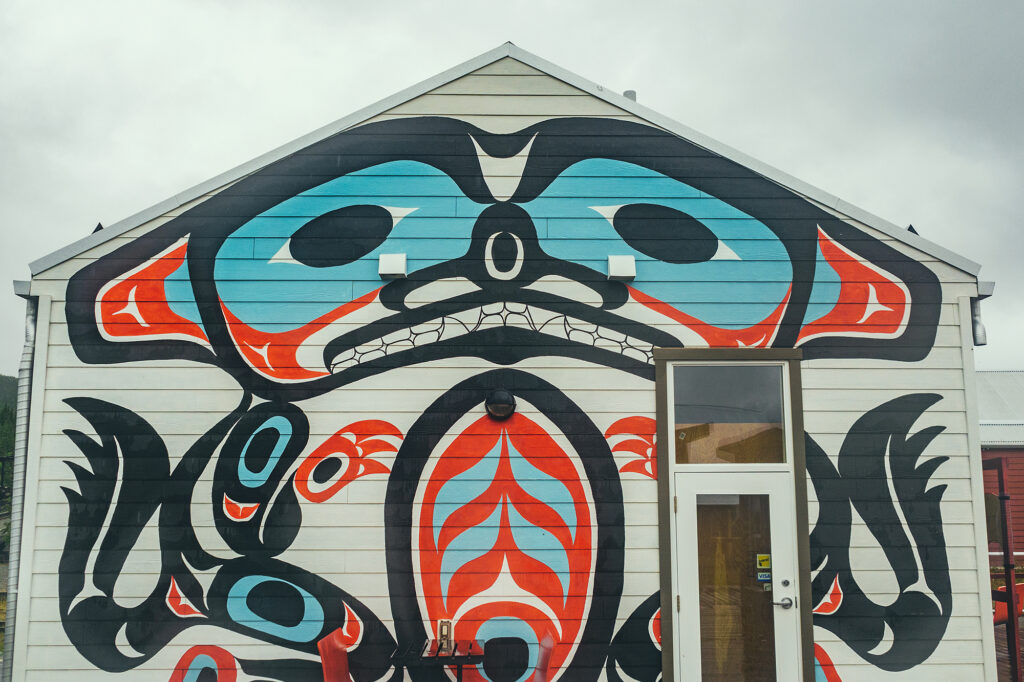
The Carcross/Tagish First Nation is comprised of six Clans, separated into the Crow and the Wolf Moiety, or social groups. The Crow Moiety includes Deisheetaan, Ganaxtedi, Kookhittaan, Ishkahittaan and the Wolf Moiety includes the Daklaweidi and the Yan Yedi. Each of these clans plays a vital role in the governance of the Carcross/Tagish First Nation.
The original inhabitants of this area are the Tagish people who belong to the Tagish linguistic grouping of the Athapaskan language family. The area also became the home of Tlingit traders from Southeast Alaska who were venturing into the interior of the Yukon for trade purposes, perhaps for 200 to 300 years prior to contact in the Yukon. Today many of the Carcross/Tagish First Nation people are descendants of both Tagish and Tlingit. As of January 2006, the Carcross/Tagish First Nation is a Self-Governing First Nation
(Taken from the Council of Yukon First Nation)
We took a rainy stroll around the historic cabins and to the boat remnants. The sternwheeler had been under renovation for close to 15 years, and nearly finished, when it tragically burnt down. Only the Stern wheel and the very charred bow remain, and in-between are just 2 open floors with no walls to indicate its former size.
The town is located on the shores of Nares Lake, and features a swing bridge built in 1990.
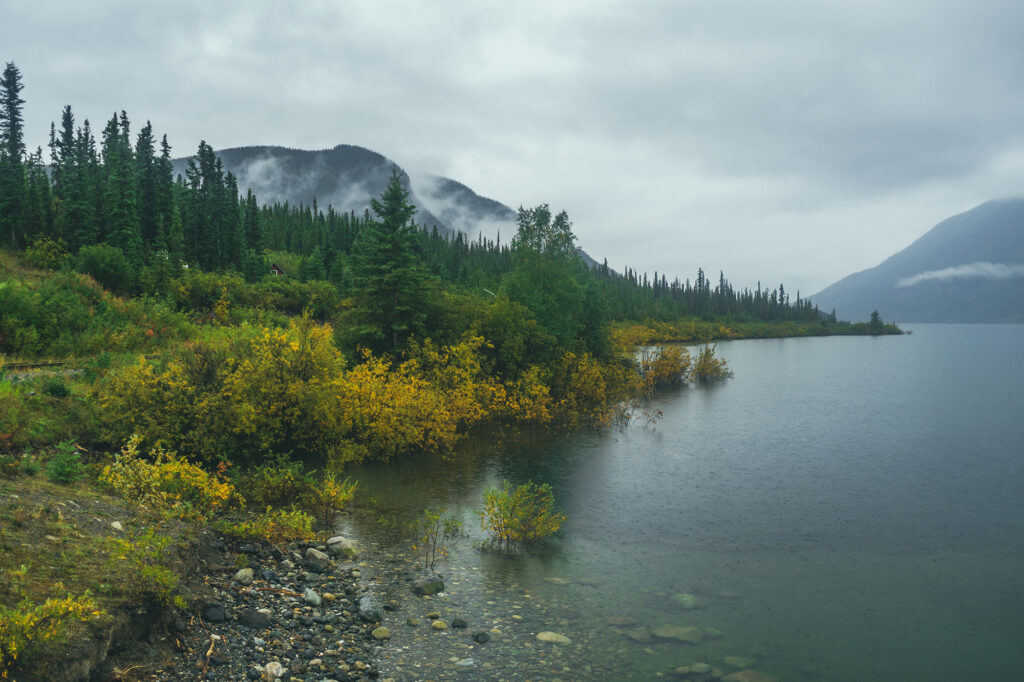
[gallery link="file" columns="2" size="large" ids="4424,4423"]
Ironically, Carcross has one of the lowest amounts of precipitation days in Canada, so i guess the fact we had a rainy day made it somewhat special?
The local coffee shop was open so we gladly grabbed a hot sandwich, coffee and pastries before heading back on the road.
Next we drove to Teslin to visit the George Johnston museum (we had tried to stop by on our way in a couple of weeks prior but it was closed that particular day).
The museum was very well done, with information on the Inland Tingit peoples of Teslin, as captured by George Johnston. He was a self-taught photographer, who also became famous for being the first person to bring a car to this area, at a time when there wasn’t even a road to drive on.
He used the car for hunting and as a taxi service, after he cleared out about 5 km of track to travel on. That track later became part of the Alaska Highway.
The museum offered screenings of the movie Picturing a People: George Johnston, Tlingit Photographer, which we started watching but had to leave unfinished as the museum was closing (the film is available to watch online on the NFB website). The museum also had an area about local wildlife and how it was traditionally perceived and used as resource by the Inland Tlingit community.
It was still raining when we left the museum. We debated checking into a motel, but the options were limited so we eventually decided against it and settled on the nearby campground. It pretty much rained all night, with temps around 5-6°C (admittedly my mood wasn’t the greatest, especially after I’d seen that there was rain on the forecast for the following 3 days). We did book an Airbnb for 3 days later, splurging on a house near Fort St John (the closest available airbnb we could find along our itinerary). It was something to look forward to if the rain persisted. We also decided we would have dinner at a restaurant in Watson lake the next day, so we could have some dry time then and not have to worry about making dinner in the cold and wet.
Once we’re under the tent and into our sleeping bag, it’s always cosy even in the rain, but everything else becomes a bit of a process when dealing with wet gear and cold.
August 29 – Watson lake
We didn’t have much planned on that day, other than drive the 250 or so kilometers from Teslin to Watson lake. There isn’t much to stop and do on that stretch of road, which was fine because it was still raining heavily after we packed up. We did stop at the Yukon Motel & Restaurant to make use of their washrooms. Nothing like washing my face with hot water after a few nights of cold, wet weather!
We drove for a bit and had lunch at a side-of-the-road rest stop. I didn’t have the motivation to prepare much in that weather, but thankfully we had two cans of tuna + quinoa salads, which we ate in our seats, with a side of chips and m&ms. That’s also the reality of road trips, there’s not always a scenic, sunny spot to stop at and that’s fine. As long as we can fill our bellies with food, the mood usually stays high.
We arrived in Watson Lake mid-afternoon and went to the Visitor Center, for warmth, wifi, dinner recommendations, and somewhere dry to sit for a little bit.
They had a small exhibit on the construction of the Alaska Highway as well as a 20 min movie. The 1600-mile long Alaska highway was constructed by military effort in 1942, as a way to connect Alaska to the rest of the US. Prompted by the attack on Pearl Harbour, it was completed between March and October of that year, in roughly 8 months. About 11,000 soldiers worked on the project, in very harsh conditions and across incredibly challenging terrain. While putting this post together I came across two interesting articles on the construction of the road, so if you’re so inclined, below is a bit more information on the mammoth task that its construction was, and the men who made it happen.
Why Building of the Alaska Highway is Still an Epic Feat 75 Years Later
The Construction of the Alaska Highway, 1942: The Role of Race in the Far North
Next we got some food from the grocery store – it seems even when we don’t “need anything” we can’t seem to go into a grocery store without coming out with a handful of items. Then we drove back to the Watson Lake Campground, the same we had stayed at 2 weeks earlier, and after setting up camp, we chilled for a bit until dinner.
Somehow the rain stopped and we even got some shy rays of sun through the trees as we were setting up.
To escape the weather that night, we decided to go to a restaurant since there were a few options in Watson Lake. We chose the New Nugget, a very Westerner-tailored Chinese restaurant (they didn’t even bother offering chopsticks). Their wonton soup and vegetable fried rice were really tasty and we left with a full belly.
Although this stretch of road wasn’t the most scenic of the trip, we still learned a lot about the area, the people that live there, and how the road came to be. This trip overall definitely had a good mix of scenery, outdoor activities as well as history and culture to discover.
